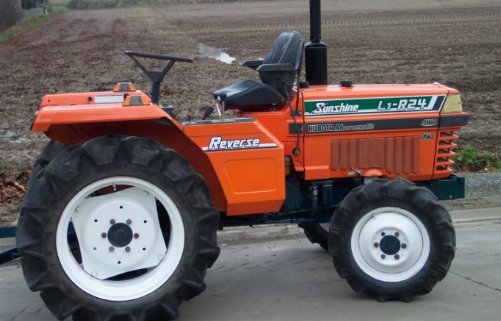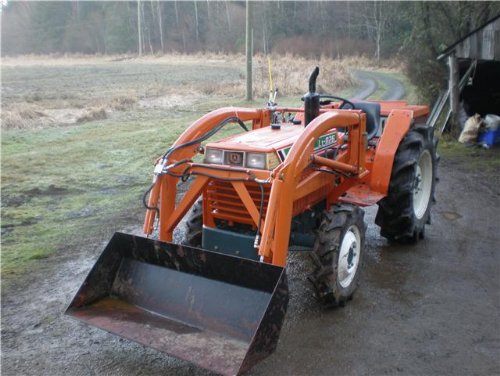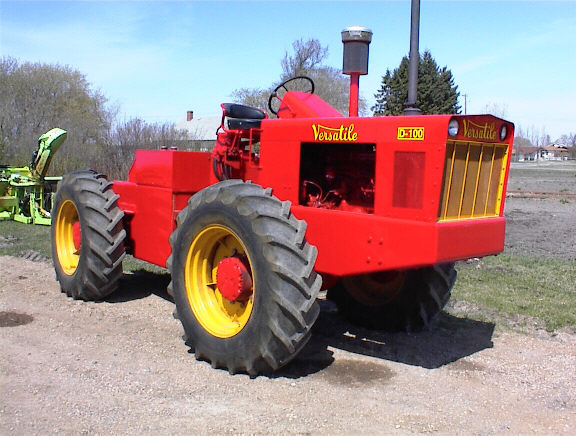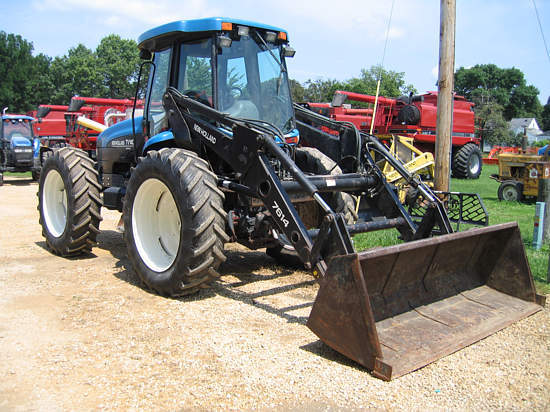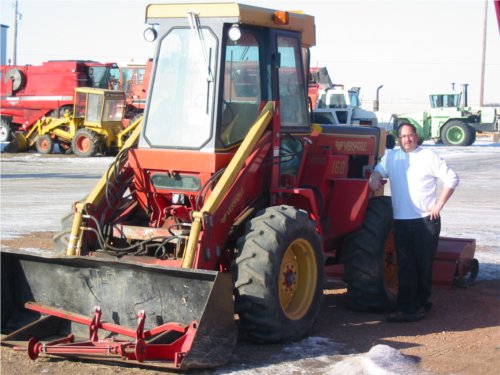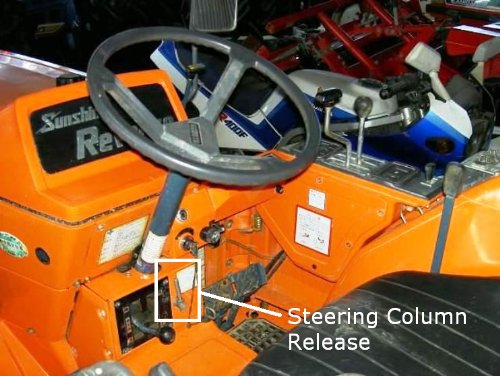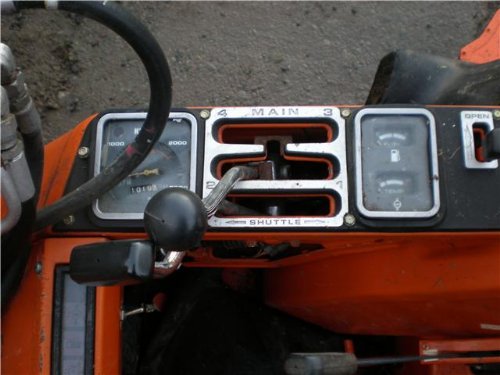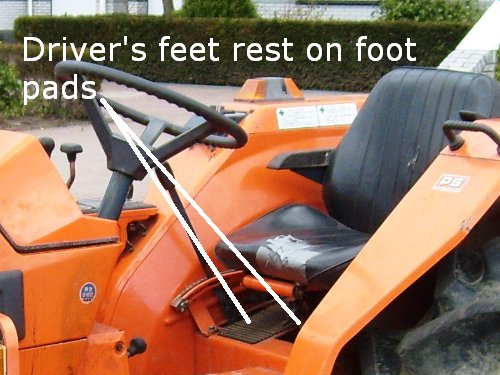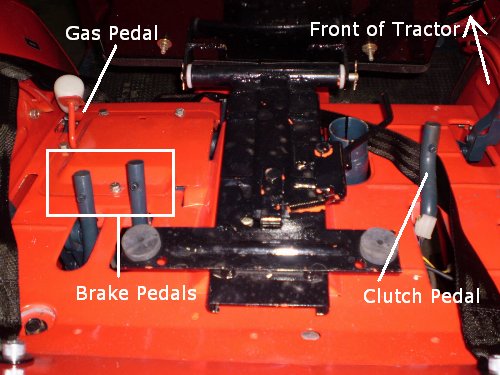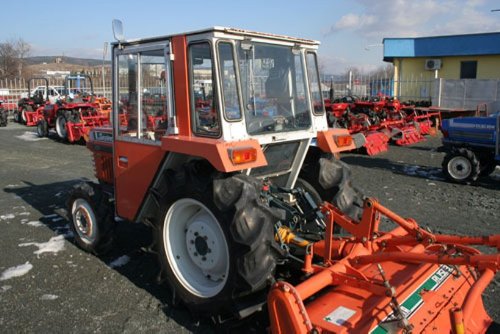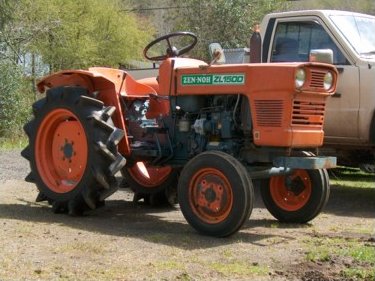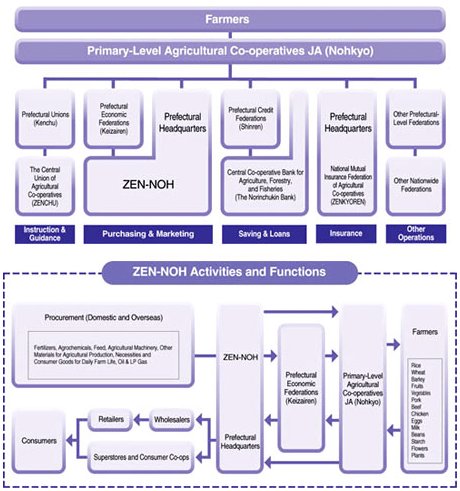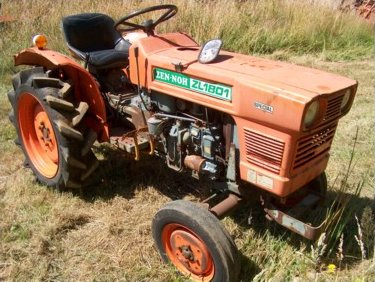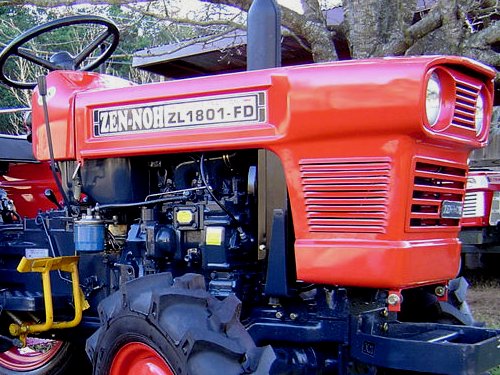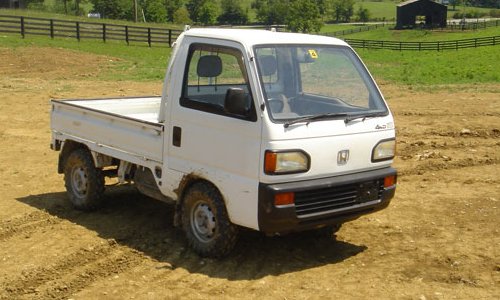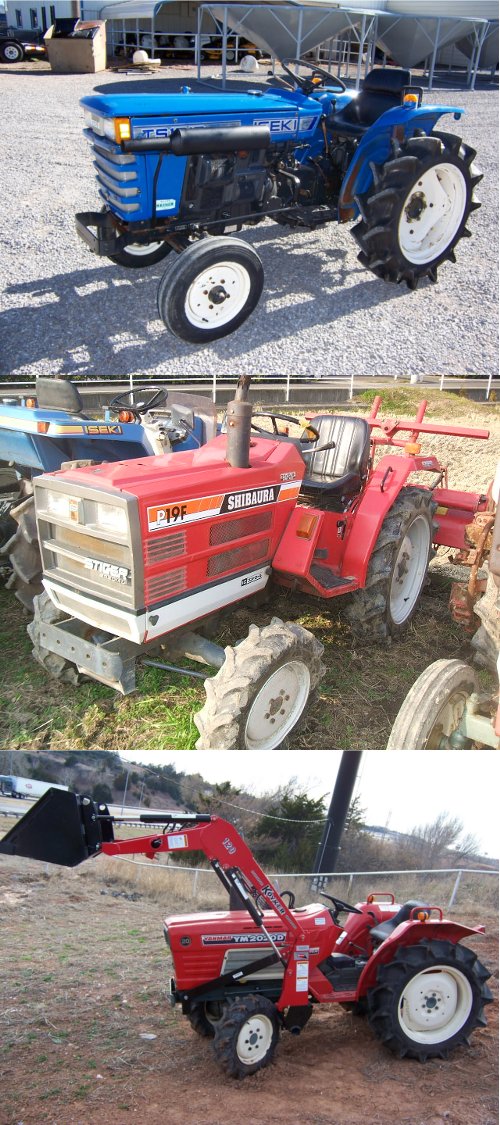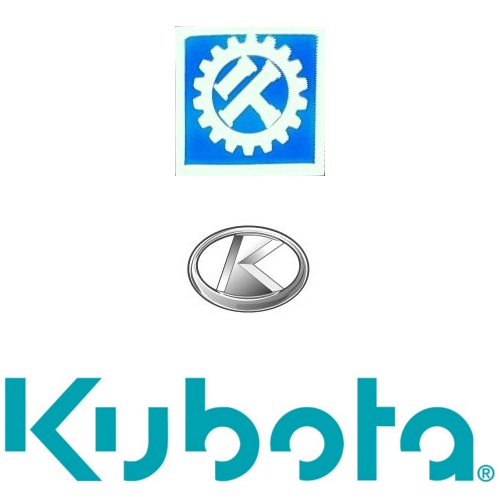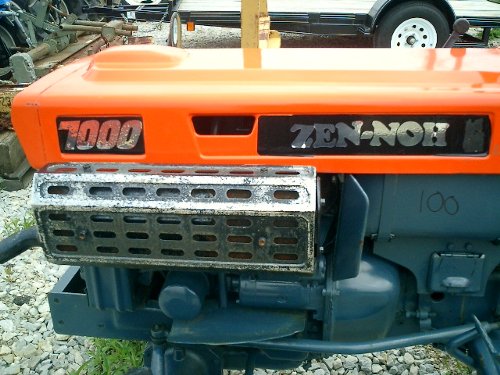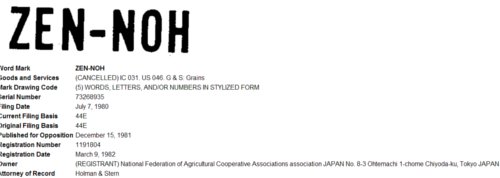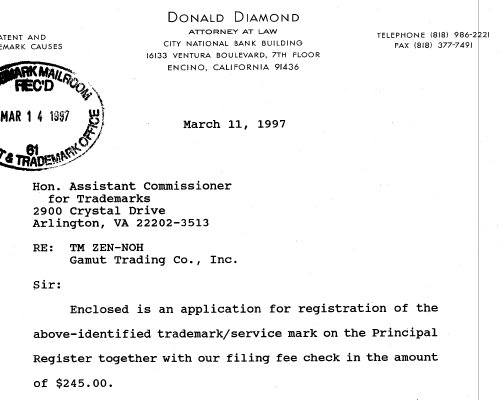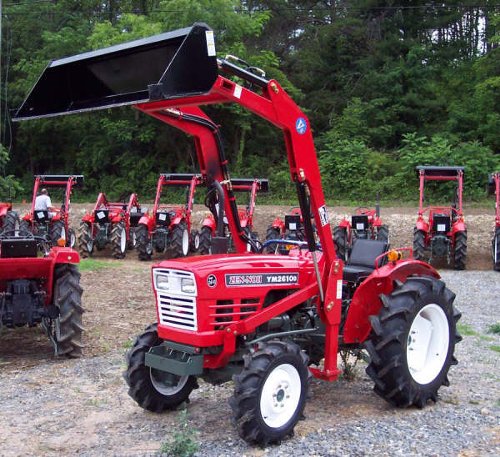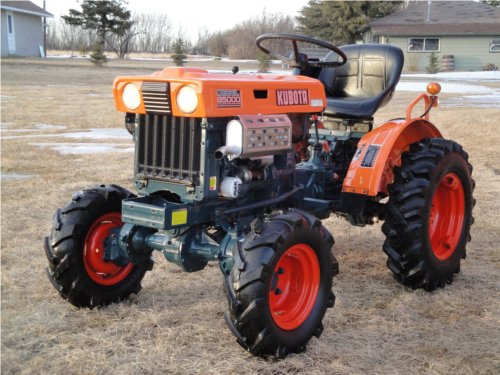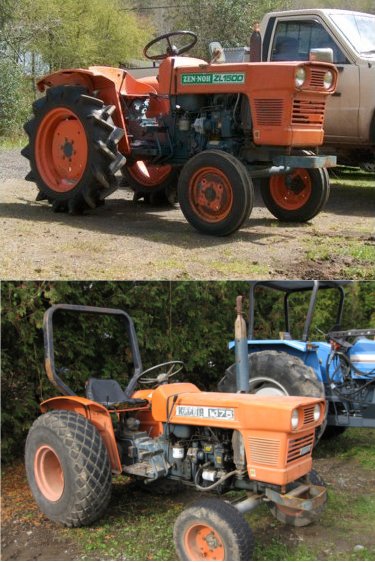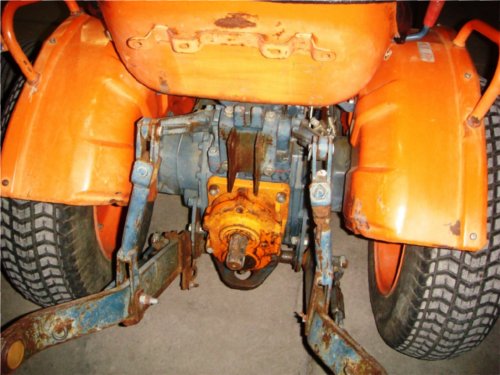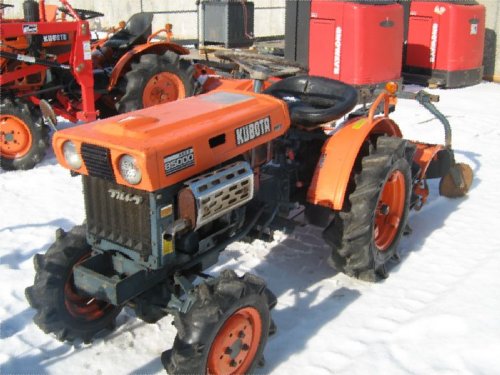![The procedure for loading gray market Kubota, Iseki and Yanmar tractors into shipping containers. Thousands of containers like these made their way from Japan to Canada, the United States, Australia, Europe and beyond, flooding local domestic markets with low-cost alternatives to the new tractors at dealerships.]()
The procedure for loading gray market Kubota, Iseki and Yanmar tractors into shipping containers. Thousands of containers like these made their way from Japan to Canada, the United States, Australia, Europe and beyond, flooding local domestic markets with low-cost alternatives to the new tractors at dealerships.
In ZEN-NOH and Kubota Part 1 we learned that ZEN-NOH (or Zennoh as it is sometimes written), is not a tractor brand. It is the name of the largest agricultural cooperative in the world and in the past, they have partnered with Kubota to have equipment built for them. In this article we begin to explore how these tractors made their way across the ocean and what consequences it had for those involved and, for Kubota.
2 Reasons for ZEN-NOH Labeling
You may be asking yourself that if ZEN-NOH is not a tractor brand, make or model, then why does it say that on the sides of the hood of your tractor? You may even notice a plastic name plate firmly attached to the grille area that says ZEN-NOH. How is this possible?
![zennohdecalsandgrille A Kubota L1801 with ZEN-NOH hood decals and plastic grille insert.]()
A Kubota L1801 with ZEN-NOH hood decals and plastic grille insert.
Your tractor says ZEN-NOH on the sides of the hood for one of two reasons:
-
Built for ZEN-NOH by Kubota
Kubota built hundreds of thousands of every conceivable model of their tractor line-up for immediate local delivery to ZEN-NOH. Some of, but not all, the tractors that ZEN-NOH took delivery of were affixed with their name. Kubota installed hood decals and ZEN-NOH branding right on their own assembly line during final stage roll out.
It is not known whether Kubota relabeled their own product under the terms of a contract with ZEN-NOH, or if the cooperative itself was looking to garner some goodwill and advertising of their own once these re-branded tractors were deployed.
One thing is certain, ZEN-NOH was, and still is, buying tractors in very high volume from Kubota and as such, gets a nice volume purchase discount. The rock bottom pricing allows ZEN-NOH to lease or sell the tractor to the farmer or producer at a very affordable price. Everyone wins all the way around.
These ZEN-NOH branded Kubotas are original ZEN-NOH which differ from their counterparts as you will read below.
-
Exporter Relabeled
The second reason why you may have ZEN-NOH branding on your Kubota is that your equipment was intentionally relabeled at the time of export by a 3rd party. Why would someone go to the trouble of relabeling perfectly fine Kubota equipment at the shipping docks on Japan’s eastern coast? Money of course, but the story is a little more complicated than that.
Japan’s Equipment Renewal Policy
Before we get into the details of how ZEN-NOH and gray market tractors landed in the United States, a quick lesson on Japan’s equipment renewal policy is in order. Every single year thousands of used right-hand drive cars, Kei trucks, mini-trucks, motorcycles, forklifts, mini track hoes, engines, generators, and so on, are exported in massive volume from Japan to other countries.
![Honda Mini Truck A Honda mini truck - the same type that are exported from Japan by the container load every year.]()
A Honda mini truck - the same type that are exported from Japan by the container load every year.
The Japanese government offers huge incentives for its citizens to continually buy new and they impose massive taxes, penalties and red tape for anyone wanting to hang onto their old car, tractor or mini-truck. This process keeps orders flowing to local manufacturers for their durable goods and ensures a strong domestic economy. It is less expensive to purchase or lease a new Kubota tractor for use on your small farm in Japan, than it is to keep and maintain the used one.
What Japanese equipment owners are left with is a very strong incentive to abandon older equipment. This older equipment has to go somewhere. Kubota and ZEN-NOH labeled Kubota tractors must leave Japan, as absolutely no domestic market exists for these small compact tractors in the country of origin. Regardless of the number of hours showing on the hour meter or the name plate on the side of the hood, all older equipment, cars, trucks, generators and what have you, must leave
Early Days of Importing Kubota Tractors
Some saw this massive build-up of supply in Japan of used agricultural equipment as an opportunity. And why not – a container holding 16-18 used Japanese tractors could be purchased, shipped across the ocean and unloaded for the same price as 3 or 4 new tractors. Profitability was guaranteed – an endless supply and a hungry American market.
Early in the 1990s, ground zero for importing used Kubota tractors into North America was 1197 Bacon Way, Lafayette, California 94549. Home of Mike Wallace and Wallace International Trading incorporated in 1984. Kubota did not know it yet, but this tiny operation on the west coast would grab its attention in due time. Keep in mind that at this point, there were no gray market tractors. Kubota had not yet detected and banned the practice.
Wallace was brilliant and recognized very early that a huge untapped market existed in the United States for a good quality, low hour, used compact diesel tractor – especially one that said Kubota on the side of the hood! He sought out and sourced a group of willing Japanese based exporters that would be capable of gathering, cleaning, disassembling, containerizing and shipping the many boxes of tractors he would need to satisfy the demand.
The new business partners in the supply chain included Eisho World Ltd., Nitto Trading Corporation, Sanko Industries Co., Ltd., Sonica Trading, Inc., Suma Sangyo, Toyo Service Co., Ltd., all headquartered in Japan and all cooperating with Wallace International to export these surplus tractors.
A Distribution Network Emerges
Now that Wallace had an agreement to supply used tractors nailed down, finding used equipment dealers wanting to add to their sales and bottom line was not difficult at all. Although selling off shore used compact tractors was unheard of until that point they all bought in agreeing to take several units each as part of an initial order agreement and securing their sales territories.
The initial distribution network for Wallace’s imported Kubota tractors included:
- Bay Implement Company of Monticello, Arkansas
- Casteel Farm Implement Co. of Pine Bluff, Arkansas
- Casteel World Group, Inc.
- Gamut Trading Co., Gamut Imports
- Lost Creek Tractor Sales
- MGA Inc. Auctioneers
- The Tractor Shop
- The Tractor Company
Wallace would handle all the logistics of product selection, shipping, importation, customs clearance, duty and fees as well as offers to buy that were presented via fax to his distribution network of resellers. Within days of landing on US soil the imported units were disbursed to the distribution network. Wallace never actually held inventory – rather tractors were pre-sold to the distributors. Orders were placed with the exporter in Japan only after Wallace had the container load sold locally in the United States.
A Taste of Success
Wallace International Trading now had a supply chain and a method of distribution. The orders were placed, tractors gathered, cleaned, dismantled, packed for shipping, the containers were loaded and at the mid-way point on the voyage, the money changed hands – as is customary.
The first containers each loaded with 16-18 tractors and rototillers hit the water in the Pacific destined for a shipping port on California’s coast. Interestingly, it was not just Kubota tractors on that first boat ride out of Japan. Sharing those containers were other compact diesel tractors made by Mitsubishi, Yanmar, Iseki, Hinomoto, Suzue, and Shibaura.
Things were looking good for Wallace – he had a steady stream of tractors arriving by the container load into his distribution network state-side. He had pioneered the concept of importing inexpensive but high quality compact tractors out of Japan. He was the first one.
![Other Imported Models Other tractors models commonly imported from Japan: (top) Iseki TS1610 (middle) Shibaura P19 (bottom) Yanmar 2020]()
Other tractors models commonly imported from Japan: (top) Iseki TS1610 (middle) Shibaura P19 (bottom) Yanmar 2020
Kubota Takes Notice: A Giant Awakens
It did not take very long after the first container loads of Wallace’s imported tractors that intel started to make its way back to Kubota corporate. Early buyers of these imported Kubota’s were now showing up at the parts departments of their local dealer looking for parts for models that the US parts men had never heard of. L1501, B5001, L2201? What?
By 1996 the phones and faxes at Kubota head office started ringing off the hooks as more and more franchised dealers found themselves competing for sales with these off shore Kubota cousins. Sales were brisk! Low hour, like-new Kubota tractors priced thousands less than a new North American model down the street started a ground swell of anger amongst the equity brick and mortar Kubota dealers. The bad blood between imported Kubotas and built-for-America equipment had begun.
Kubota USA knew that their franchisees would revolt, stop paying royalties and probably launch a class action lawsuit against them for allowing this to happen in the first place. Kubota responded to these unauthorized importations by launching a 337 Suit, or in layman’s terms, a classic trademark infringement case.
Wallace, his dealers and his supply chain would be seeing a lot of oak – the inside of a court room!
Up Next, Smashing the “Cartel”
The stage was set for Kubota’s landmark legal case against Wallace International Trading. In our next installment of this series we explore how Kubota flexed its legal muscle to break up the importation of what it called, for the first time, illegal importation of gray market units into the United States. Click here for part 3!
Service Department Vic
Releated Articles
ZEN-NOH and Kubota Part 1: A Partnership
ZEN-NOH and Kubota Part 3: Lawsuits
ZEN-NOH and Kubota Part 4: Loopholes
ZEN-NOH and Kubota Part 5: Fallout
